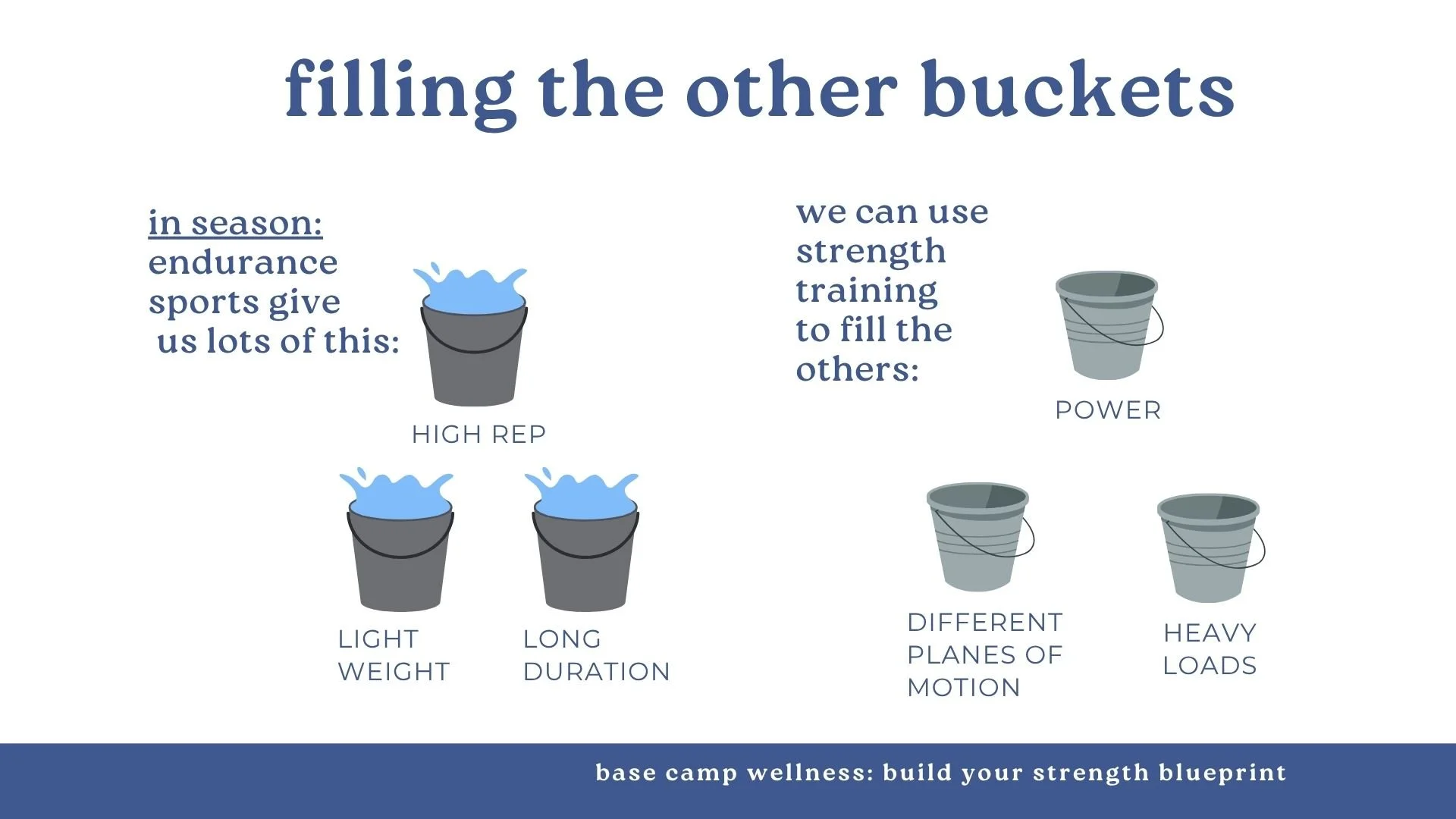Can I get stronger training bodyweight-only?
One of the most common questions I get from trail runners and outdoor endurance athletes is “can I train bodyweight-only?”
Body weight exercise can be really appealing and lowers some key barriers: we can do it from home, it doesn't require any equipment, and it might feel less intimidating than loaded strength training.
It can be a great place to start - and if that's all you have access to right now, it’ll be better than doing no resistance training. However, I would strongly encourage eventually getting comfortable with doing loaded strength training exercises and getting access to at least a little bit of gym equipment.
For strength gains, intensity matters.
When it comes to strength, there are many methods to build it - but one thing that’s abundantly clear from the current research is that intensity matters.
Generally, when we're looking at building muscle, strength or capacity (aka muscular endurance or fatigue-resistance), we want to be within two to three reps of failure - “reps in reserve”- at most at the end of a set.
How do I know I’m within ~2 reps of failure?
“Failure” in lifting is when you literally cannot push the weight all the way up. So getting within 2-3 reps of that is going to feel pretty challenging in order for our body to adapt and get the benefits of that training.
You’ll get better at judging this intensity with practice - but here are a few signs you’ve hit “RIR 2”:
✅ Last couple reps are significantly slower than your first several reps
✅ You’ve still got good form but you’re grinding or maybe even grimacing through them
✅ They might start to get a little “sticky” - it becomes obvious where your weak point in the movement is, you might get “stuck” there on your last rep but can push through it.
👉 So - what does this mean for bodyweight training?
Bodyweight-only requires LOTS of reps to reap the gains
If you’re brand new to strength training or returning after an injury, bodyweight exercises might be a great starting point BUT as you build strength it's going to take more and more repetitions to hit that “2 reps left in the tank” level of challenge.
Especially for especially for lower body - things like…
bodyweight squats
bodyweight lunges or step ups
bodyweight single leg RDLs or glute bridges
And that's also going to make your workouts really long and if you're an outdoor athlete, that time might be better spent actually training for your sport so slogging up a mountain or logging miles on your gravel bike than spending really long workouts in the gym.
You might find you need to hit 15, 20, 30, 50 reps to really be challenged. And not only is that going to make workouts feel repetitive and boring…
Workouts will feel like they take foreverrrrr
Doing that many reps for 2-4 sets is gonna take TIME.
Time that might be better spent training for your sport, doing what you love (hiking, trail running, mountain biking), recovering from all the things, or just doing “life stuff” - meal prepping, grabbing a bevie with a friend, cuddling your pup on the couch.
⛰️ And by the way doing TONS of light weight reps sounds a lot like endurance sports which reminds me…
Don’t double-dip on endurance
Mountain sports are often endurance based - think long duration, unloaded or lightly loaded activities. During peak hike, bike, run season you’re already doing tons of bodyweight reps every time you hit the trails.
My philosophy as a coach is that for most of the year, your time in the gym is best spent filling buckets that your outdoor sports don't.
In order to stay well-rounded and resilient as an athlete, your might want to focus your gym training on:
lower reps & heavier loads
power (moving lighter loads QUICKLY and explosively)
loaded movement in different directions (side to side, rotation, etc)
To borrow an analogy from Mike Boyle (an excellent coach in the athletic Strength & Conditioning world) - use your training to FILL THE OTHER BUCKETS.
➡️ And the simple truth is that doing that is going to require building the skill of lifting and access to some equipment.
So - what’s holding you back?
🤔UNSURE ABOUT LIFTING FORM & WANT TO DO IT RIGHT?
➡️ Hop on my email list! I drop lifting tips and education regularly - and it’ll be the first place to learn details on the new course I’m creating to help you lift with confidence.
🏋️♀️ NOT SURE WHAT EQUIPMENT TO INVEST IN?
➡️ If you're looking for guidance on building a minimalist home gym, check out this post.
🏔️SOMETHING ELSE?
➡️ Email me - I’d love to help you troubleshoot or offer suggestions.
REMEMBER: This post is for informational purposes only and may not be the best fit for you and your personal situation. It shall not be construed as medical advice. The information and education provided here is not intended or implied to supplement or replace professional medical treatment, advice, and/or diagnosis. Always check with your own physician or medical professional before trying or implementing any information read here.


